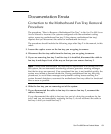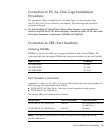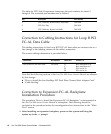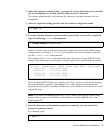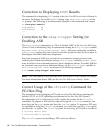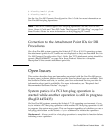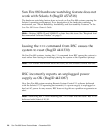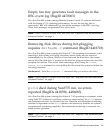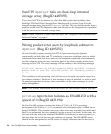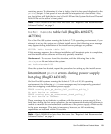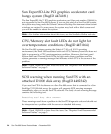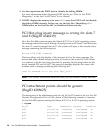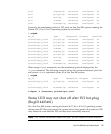
Sun Fire 880 Server Product Notes 23
receiving power. To determine if a fan is faulty, check its fan speed displayed in the
prtdiag output. A fan speed of zero should be interpreted as a fan failure. Also,
any fan failure will light the fan tray’s Fault LED and the System Fault and Thermal
Fault LEDs on the server’s front panel.
Note – Patch 110849-08 or later fixes this issue. See “Required And Recommended
Software Patches” on page 3.
hsfs: hsnode table full (BugIDs 4082275,
4475306)
For a Sun Fire 880 system running the Solaris 8 7/01 operating environment, if you
attempt to set up the system as a Solaris install server, the following error message
may appear during installation of the install server packages or patches:
NOTICE: hsfs: hsnode table full
If this message appears, the software installation will terminate prior to completion,
and the install server software will be only partially installed.
Workaround – To recover from this situation, add the following line to the
/etc/system file and reboot the system:
set hsfs:nhsnode=1000
Once the system has booted, repeat the procedure for setting up the install server.
Intermittent picld errors during power supply
hot-plug (BugID 4431165)
On Sun Fire 880 systems running the Solaris 8 7/01 or 8 10/01 operating
environment, the following picld error messages may be temporarily generated
after hot-swapping a redundant power supply:
ERROR running psvc_ps_device_fail_notifier_policy_0
No such device or address
ERROR running psvc_ps_overcurrent_check_policy_0
No such device or address
These warnings do not indicate a problem with the server or power supply. For a
brief time during the hot-swap operation, the environmental monitoring software is
unable to monitor the environmental conditions of the power supply, which results
in the error messages. This state is temporary, however, as full monitoring
capabilities are restored within 30 seconds.
Note – Patch 110849-08 or later fixes this issue. See “Required And Recommended
Software Patches” on page 3.



